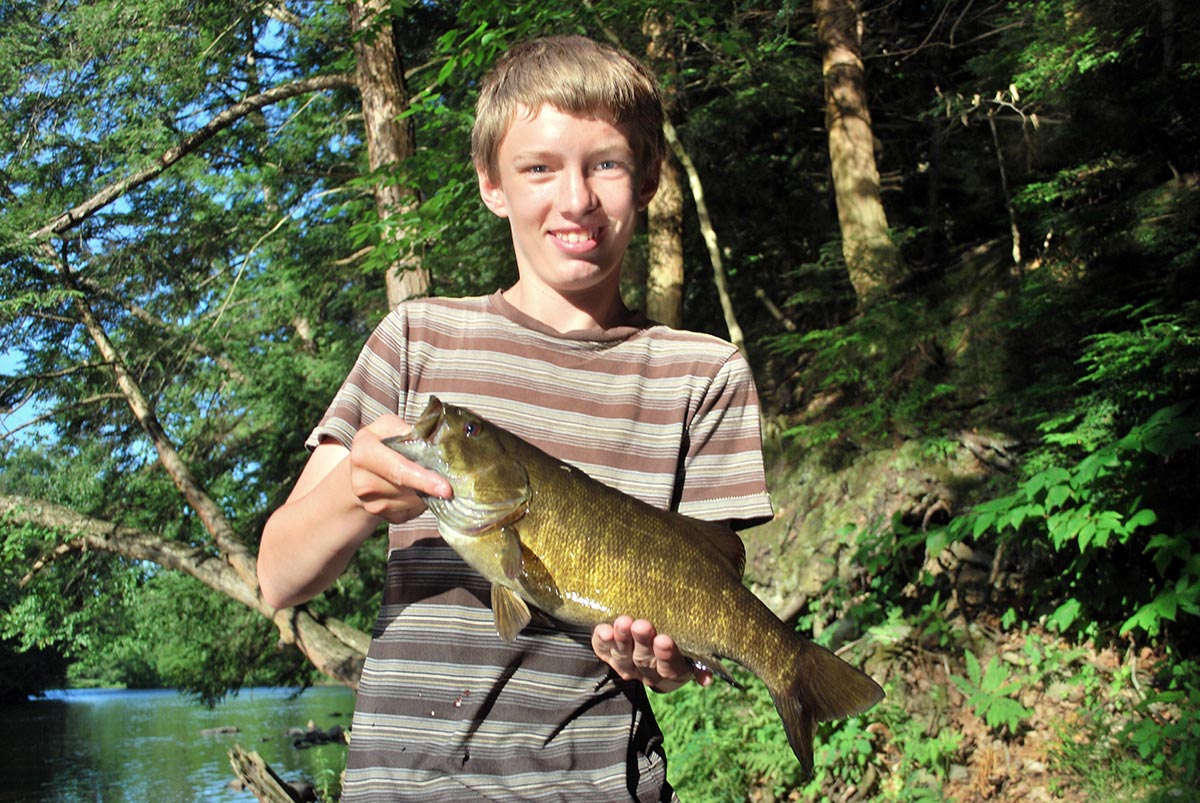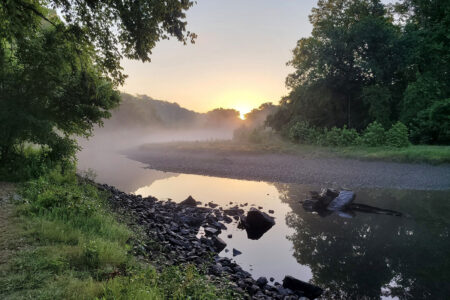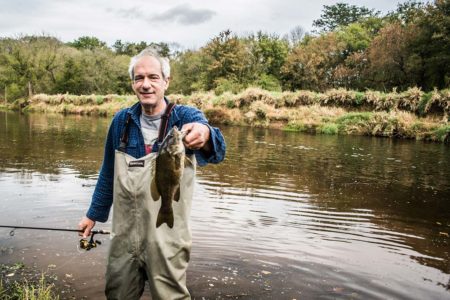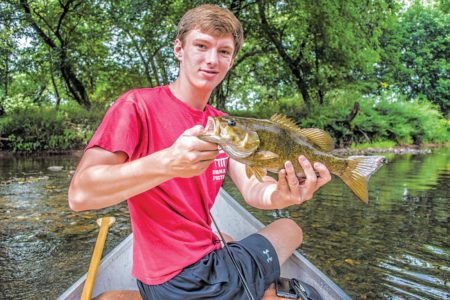While dawn and dusk have an edge, summertime smallmouth bass are a sucker for a Senko throughout the day.
In the heat of summer, small river smallmouth bass remain vulnerable to anglers throwing plastic baits. They’re more aggressive than largemouths and can be caught anytime during the day, but when the heat is especially intense, early and late is better. I choose between a few plastics, my favorite a 5-inch Senko. I’ve hooked plenty of big bass using various colors, but 9-inch bass seem to pounce on a big Senko as eagerly as they would on a 3-inch version. They get hooked easily, too.
Big Senkos allow long casts. Even the 5-1/2-foot medium power St. Croix I use, a 1000 series spinning reel loaded with 6-pound-test mono mounted on it, puts one where I need it to go before a bass would sense my approach. A longer rod will cast a Senko further, but you would have to do more to manage that rod’s accuracy. A challenge with the shorter rod is setting a hook from a far distance, so if you use the likes, make sure size 2 plain shank hooks are sharp. My rod has some backbone for both hook setting and casting. I use an O-ring tool to save money over the long run. A worm is best rigged Whacky, hook in the middle, and if you don’t put an O-ring on it, slipping the hook underneath, you’ll lose it a lot easier.

If you fish early, shadows on the water will be abundant. When the sun just begins to get on the river, I take every hit under shadow, but it’s not an absolute rule to follow as morning lengthens, because although you can always find shadow on some spots holding bass, plenty get caught in bright sunlight. Look for those shadowy spots, though. On one occasion, my son put a Senko at the edge of vegetation floating over water a foot deep and got hit by a 17-incher that swiftly bolted from its lair to snatch the worm exposed to sunlight.
Summer bass aren’t necessarily deep in the holes, although some will be. They occupy all sorts of spots. Some stretches are not only shadowy during the afternoon under tree limbs extending beyond the banks; they have rocks with crevices underneath where bass lurk. Bass openly swim shallows of a foot or two, also, and sometimes they corral shiners or killiefish, giving away their whereabouts by splashing.
Many hits come on the worm’s initial drop. If you make a long cast, a bass alert to any forage opportunity will bolt to the worm from as many as 5 or 6 yards away. Other bass aren’t as eager but hit a worm before it settles on bottom or gets carried to the end of its drift in a swift current. Others yet may take a Senko retrieved by intermittent jerks of the rod tip to impart fluttering action. I’ve even experienced smallies crashing worms when I’ve quickly retrieved them to place new casts, although this doesn’t happen often.
As I’ve said, I fish smallies on July and August mornings, but I feel a preference for the evenings, because the mornings are usually on the warm side, anyway. It is possible morning temperatures will drop to 60 or cooler, but more likely be about 70. I feel an honest summer evening is when bass fishing might accompany temps in the mid-80s. I not only feel good as I wet wade, the bass seem to like the mugginess, too. Fishing might be quick, might not, but I’m after a big one, anyhow.
Some anglers will reach for a topwater when the evening river surface is calm, and I won’t dissuade any from doing so, but I’ll stick to a Senko because warmth makes it feel right. And a worm dropping in on a big smallie before the light goes out can really do the trick. As I promised in my previous article, I want to point out that big ones sometimes get caught in V-formation stretch tailouts. Water flows out in a narrow V shape that funnels forage to a smallmouth in position to eat. It will hold in that narrow, swift, shallow water. Intuitively deciding when to fish such a spot, based on experience, might help. Learn to wait until something tells you to move, and then don’t be timid about doing so. Drift a Senko to a bass waiting for you.





